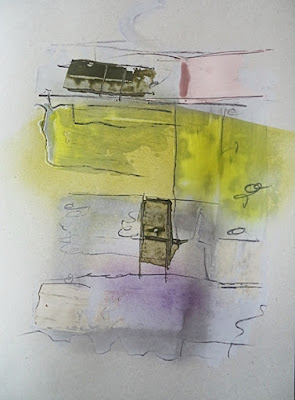These are the latest contributions to the debate on arts funding that has also swung between redistribution of Lottery money away from London and investing in strong existing organisations, wherever they are based, to be more effective nationally.
I should put my cards on the table straight away: I run an arts organisation. I think that arts organisations do so much more to engage with a wider public than these politicians have said. But are we missing an important point when we make arguments and counter-arguments for cultural investment?
culture professionals
Join the Culture Professionals Network
Sign up today and receive exclusive member newsletters, networking opportunities, member-only discounts and more.
Click here
In these times of reduced investment in the arts, two things strike me. First: the struggle to keep the show on the road and balance the books can turn into the struggle to survive at all costs, even if it means fewer performances, reduced rehearsals and a more mainstream programme. Second: artists are way ahead of us in their imagination and energy; in being able to create and present brave, experimental work that is more compelling for younger, more diverse audiences than simply programming work that is considered widely accessible or popular.
What's needed is a rebalancing of resources to give artists more autonomy and control over how they work and what they make. Why? Because it's under these conditions that some of today's most interesting artistic experiences are being created and new connections with audiences made.
I'm lucky enough to talk to composers and artists pretty much every day and what's struck me over the last two years is the exponential growth in the number who produce and present their own work. It's not a new concept of course, but the rapid growth in the number of artist-led activities of the past few years is not just a continuation of tradition. It's a radical response to a critical situation.
At Sound and Music, we're working at any one time with over 50 emerging composers. I would estimate that on average, around a quarter of them are involved in organising events or ensembles of one sort or another (many running them as a business) and that the majority of them are likelier to be performed by their peers than by established organisations.
Sometimes they're asked: why give yourself the additional stress of planning, fundraising, promoting and organising, on top of the mindbogglingly complex act of composition itself? Their answers tend to be variations on a theme: "There isn't enough work around unless you're really established"; "I want to have more control of where and how my work is presented"; "I think there are new ways to present work and reach audiences"; "I want to work with my peers as an equal."
Many of these events happen outside traditional institutions. I've been to adventurous programmes in car parks, community centres, galleries, warehouses, former factories, tunnels, clubs, pubs and bars. They attract young audiences of a size and nature that many more established organisations would dream of. I've been delighted, surprised, shocked and infuriated, but never bored. I like to think that downtown New York in the early 1970s was like this.
How are they funded? Usually by a cocktail of Arts Council England and charitable project grants, donations, in-kind help, enthusiasm, return of favours and sometimes with the support of an organisation. It's classic entrepreneurship and a startup mentality, but avenues for support are too few and limited. As a sector, we need to be better at providing the infrastructure, resources and autonomy for artists and composers to follow their creative instincts in reimagining how adventurous arts can connect with audiences.
Of course, larger organisations are important: the ability to bring resources, years of training and expertise together and present great work at a larger scale is without question vital to a healthy arts ecology. But the flip side of this is that, for artists and composers, access to resource and opportunity is held by a relatively small number of gatekeepers. The process by which it's decided who gets this opportunity or that resource is often opaque at best. To be clear, only a handful of the very biggest names in British music get regular performances.
What's more is that all too often the conditions and attitudes offered by arts organisations for creating new work are poor: three hours of rehearsal time for a new orchestral piece? How about a reduced fee because "the opportunity will be good exposure for you"? These are both real-life examples that are all too common and it isn't the best way for ambitious new work that speaks to audiences to be created.
Those of us who run arts organisations – and those who fund us – must take a long hard look at how we balance power, resource and decision making between institutional needs, and the drive and ambitions of artists and composers who are already showing us new models of reaching out to audiences. The debate to have is whether we can afford to carry on paying for the status quo, instead of showing our belief in artist-led renewal.







No comments:
Post a Comment
Note: only a member of this blog may post a comment.